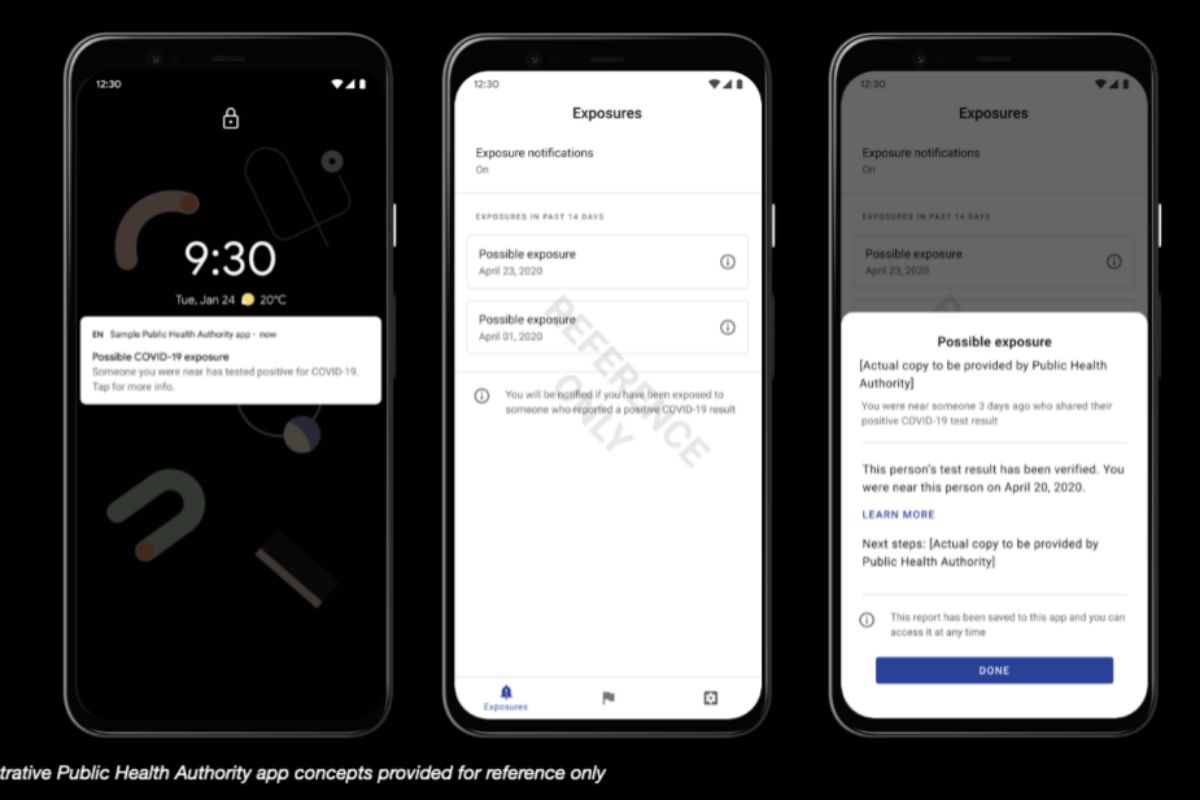- Health: This is the joint project of Apple and Google to trace the contacts of Covid-19 in the population
- Internet.Google publishes statistics on the effects of confinement in each country
Apple and Google announced last April that they would work together on an anonymous and decentralized system that allows COVID-19 to be traced automatically, using the Bluetooth function of iPhone and Android phones.
Now, the first version of this system is ready to be implemented and both companies have shown how this option will be configured within the devices and what notifications will be received by the user who has been close to someone who has tested positive for COVID-19.
The system works in association with an app that the health authorities of each country will have to develop. Apple and Google will only provide APIs (endpoints of apps with operating system functions) to make it possible to develop these apps, and sample code to help developers create them.
Companies will only allow one application per country to help coordinate response efforts, although in countries that have control of the health system distributed by region, exceptions may be made. These apps, as companies engineers have advanced to PIXEL today, will be prohibited from accessing the phone's location services to reinforce privacy and minimize security risks.
At first, traceability support will be associated with these official apps created by the health authorities, but the long-term plan is that even people who do not have them installed can receive notifications if they have been around someone who may have infected them.
Consent
When installing the app corresponding to his country or region, the user will see an explanatory screen with the operation of the system and a notification asking him to activate it. This registration process is similar on iPhone and Android. Both operating systems have incorporated support for these traceability applications in the latest security updates , but it is disabled by default.
Once in operation, the user will not have to do anything else. The traceability system works in the background, hardly consumes a battery and does not require having the health authorities app open.
If a user is diagnosed with COVID-19, they can add this information in the app (the user must also do it voluntarily) so that people who have been in the vicinity in the last 14 days are notified. Optionally, apps can use a verification code provided by medical personnel to prevent someone from entering a false positive. in the system.
The phones of people who have been close to someone infected will then show the notification, with a list of the dates and times when the infection could have occurred. The app developed by the health services may offer more information on the next steps to take.
Finally, the traceability function can be deactivated and reactivated at any time from the configuration menu of the phone.
How does it work
Developing this system while maintaining privacy guarantees requires that the method of operation be a little more complex than a simple proximity detection system.
Once the system is activated, the phone generates a single random cable every 10 to 20 minutes and broadcasts it via Bluetooth. At the same time, it collects the random keys of other telephones that are nearby and have this function activated. If, in the future, a user is diagnosed with COVID-19 and decides to communicate it to possible infected, the system marks the codes generated during the last days as belonging to someone who has tested positive (but, again, without any personal information associated).
The telephones of each person are in charge of crossing these data. If the phone detects that in the last 14 days (the codes are not stored any longer) it has been in contact with a code that is now marked as positive, it notifies the user as described above.
Both companies consider that keeping the system decentralized and voluntary will help more users to trust it, but for some governments it is a significant barrier to adoption. The UK health service, for example, has preferred to opt for its own centralized situation. Germany has also tried to push to change some points of the system but will finally choose to use this tool. One of the advantages of the Apple and Google approach is that it will work universally. That is, it will also serve to perform traceability when you can travel between countries normally again, even if the people involved have applications from different healthcare providers.
According to the criteria of The Trust Project
Know more- Coronavirus
Covid-19Apple and Google join forces so you know if you've been around someone with coronavirus
CompaniesThe government of the health crisis surrenders to the technological giants of the Google tax
MoneyThese famous apps for iPhone and Android "pluck" your bank account without you noticing

